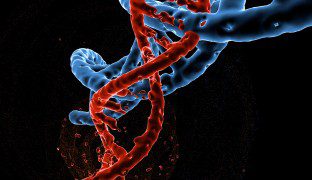Globoid cell leukodystrophy – Krabbe disease
About Disease

Krabbe disease, commonly known as globoid cell leukodystrophy, is a life-threatening neurological disorder. It is one of a series of conditions known as leukodystrophies, which are caused by the breakdown of myelin in the nervous system (demyelination). Myelin is the protective layer that surrounds nerve cells and ensures that nerve signals are transmitted quickly. Krabbe disease is also characterized by aberrant brain cells known as globoid cells, which are giant cells with more than one nucleus.
The infantile type of Krabbe disease is the most frequent and begins before the age of one. Irritability, muscle weakness, feeding difficulties, unexplained fever episodes, rigid posture, and delayed mental and physical development are common early signs and symptoms. Muscles deteriorate as the condition proceeds, reducing the infant’s ability to move, chew, swallow, and breathe. Vision loss and seizures are very common in affected newborns. Individuals with the infantile type of Krabbe disease seldom live past the age of two due to the severity of the disease.
Krabbe disease occurs more seldom in childhood, adolescence, or adulthood (late-onset forms). The most common early symptoms in various variants of the condition are vision impairments and walking difficulties; however, indications and symptoms vary greatly among affected individuals. Patients with late-onset Krabbe disease may live for many years after the commencement of the disease.
Diagnosis of Krabbe disease
There are many methods used to positively determine a Krabbe diagnosis. They can involve all or some of the following:
- Measuring GALC activity in Leukocytes taken from a blood sample, chorionic villi or a fibroblast grown from a skin biopsy.
- Magnetic Resonance Imaging (MRI)
- Computerised Tomography (CT)
- Electroencephalograms (EEG)
- Measuring the protein in Cerebral Spinal Fluid (CSF)
- Genetic testing
- Nerve conduction velocity tests
Overview
Causes
Krabbe disease is caused by mutations in the GALC gene. This gene codes for galactosylceramidase, an enzyme that breaks down specific fats termed galactolipids. Galactosylceramide, a galactolipid broken down by galactosylceramidase, is a major component of myelin.
Galactosylceramide decomposition is a typical aspect of myelin turnover that occurs throughout life. Psychosine, a galactolipid produced during the synthesis of myelin, is hazardous if it is not broken down by galactosylceramidase.
The galactosylceramidase enzyme’s activity is drastically reduced when the GALC gene is mutated. Galactosylceramide and psychosine cannot be broken down as a result. Excess galactosylceramide builds up in some cells, resulting in globoid cells.
The buildup of these galactolipids damages myelin-forming cells, preventing myelin production and leading to demyelination in the nervous system. Nerves in the brain and other regions of the body that lack myelin are unable to transmit impulses effectively, resulting in the signs and symptoms of Krabbe disease.
Symptoms
This form, which affects 90% of people with Krabbe, appears in the first few months of life and causes such symptoms as:
- Developmental delay
- Seizures
- Limb stiffness
- Optic atrophy: wasting of a muscle of the eye, resulting in vision difficulties
- Neurosensoral deafness
- Extreme irritability
- Spasticity: presence of spasms
- Ataxia: loss of the ability to control muscular movement
- Progressive psychomotor decline: progressive decline in the coordination of movement
- Feeding difficulties
- Unexplained crying
- Loss of head control
- Fevers
- Vomiting
- Extreme irritability
- Changes in muscle tone (limb and muscle stiffness, poor coordination of movements)
- Progressive loss of hearing and sight
- Spasticity (presence of spasms or consistently contracted muscles)
- Loss of developmental milestones
Symptoms usually start at two to six months of age. Development may be normal up to that time. Eventually children lose mental and motor function; some may become deaf and blind, cannot move or speak, and typically must be fed through a tube. The average age of death is 13 months (ranging from 6 months to 5 years).
Many babies in this stage of Krabbe’s disease are misdiagnosed. It is common for parents of these babies to be told that their infant has colic, reflux, food/milk allergy, or even cerebral palsy.
Diagnosis
Treatment and Management
Krabbe is treated with symptomatic and supportive therapy. Because hematopoietic stem cell transplantation (HSCT) and cord blood transplants are only available to pre-symptomatic infantile children and maybe moderately affected late-onset kids, it is critical to discuss your options with your medical team. These are merely maintenance treatments, not cures.
These transplants are allogeneic rather than autologous, and they often include chemotherapy, radiation, and graft-versus-host disease (GVHD) problems. The term “autologous” refers to a person who is their donor. It is a lengthy and demanding procedure that demands careful thinking.
Researchers are currently investigating gene therapy, enzyme replacement treatment, and other alternatives.